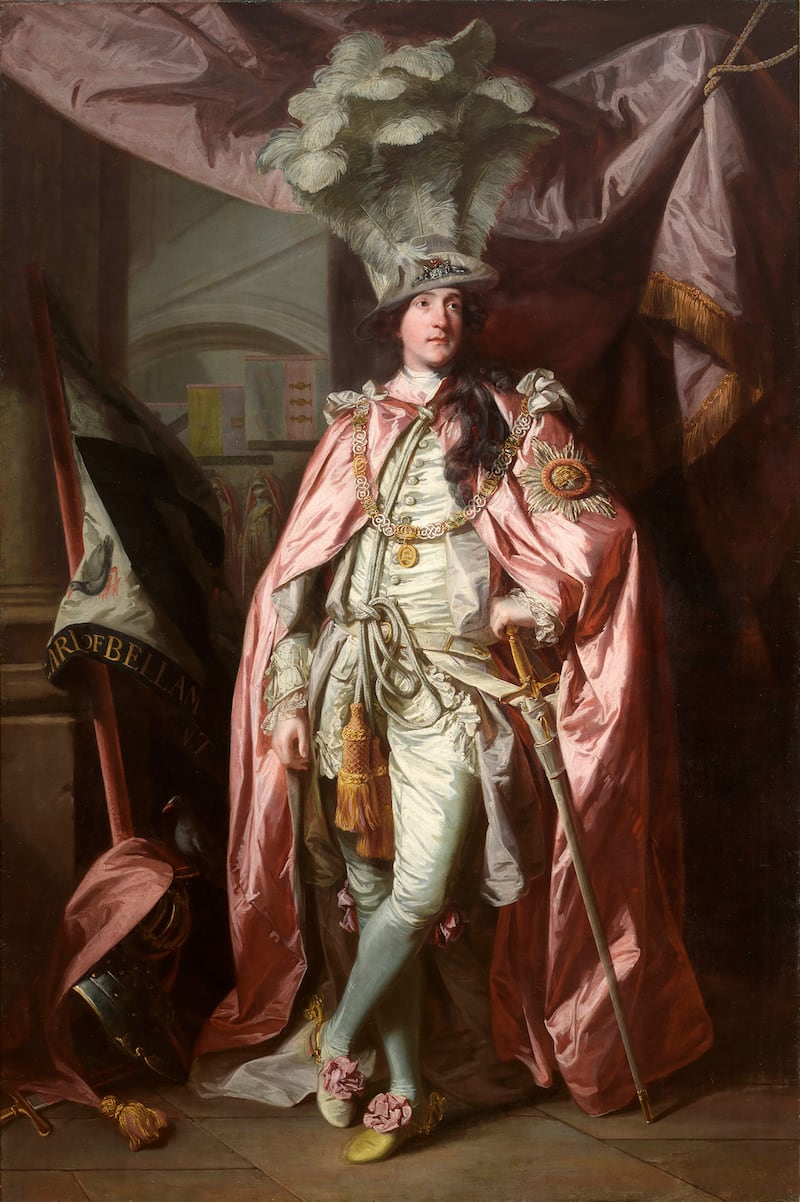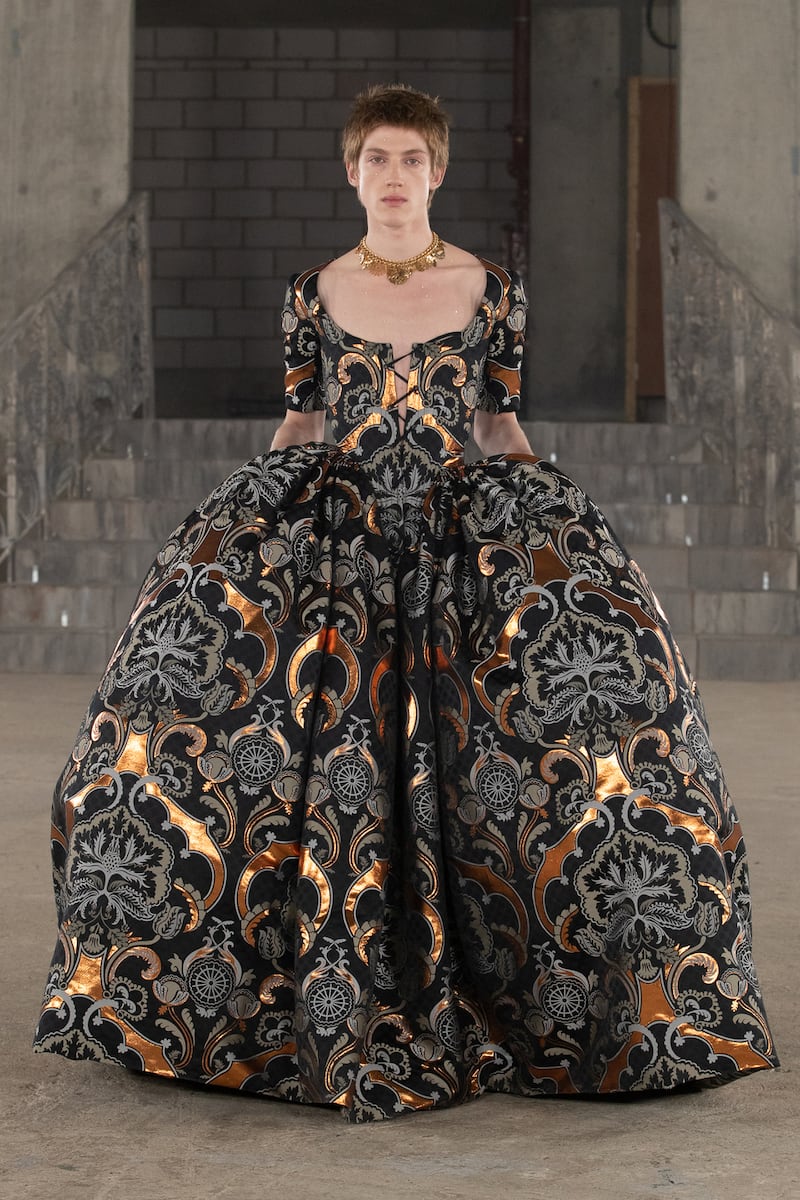When did men start to dump their laces, their balloon trousers, their frills and flounces for the more sober attire of the 19th and 20th centuries? I remember visiting the National Museum of Ireland some years ago and the astonishment at seeing its collection of incredibly ornate, colourful and embroidered frock coats and floral silk waistcoats for men worn in the late 18th century in this country. The change to more austere sartorial codes was described as “the great masculine renunciation” by the dress reformer JC Flugel.
It all came to mind at Fashioning Masculinities: The Art of Menswear at the V & A in London recently, the first major exhibition “to celebrate the power, artistry and diversity of masculine attire and appearance”.
If you can learn about history through its clothes, this exhibition provides an insight into how power is expressed through dress and how the elite asserted status through what they wore. The show traces how menswear has been fashioned and refashioned over the centuries and how designers, tailors and artists and their clients constructed masculinity as well as taking it apart.
Race, gender and fashion have been expressed from classical sculpture and how the idealised male body was perceived, up to to present day radicals and dressing beyond the binary. Three iconic gowns worn by Billy Porter, Harry Styles and British drag queen Bimini Bon Boulash that created a sensation and upended conventional notions of masculinity are on display at the exhibition for the first time.

According to co-curators Claire Wilcox and Rosalind McKever, the exhibition — “a journey across time and gender” — was planned to coincide with a period of unprecedented creativity in masculine fashion, and indeed many of the spring 2022 shows had men and women wearing similar outfits. The startling opening deconstructed suit by Craig Green from his SS21 collection alludes to the construction and deconstruction of both the masculine body and conventions of masculinity, a theme running throughout the show in its three galleries called Undressed, Overdressed and Redressed, placing historical garments alongside contemporary ones.
If viewing male underwear isn’t exactly a scintillating aesthetic experience, it is hard not to be struck by just how beautiful and elegant the long white muslin undergarment dresses from India are as opposed to Calvin Klein’s skin-tight jocks. Overdressed in the second gallery features some spectacular and lavish silks, laces and velvets, from armoured breastplates to smoking suits, sweeping capes (as in the portrait of the young Prince Farnese from the National Gallery of Ireland) and a cream corduroy frock coat belonging to Cecil Beaton embellished with pink muslin roses and broken eggshells specially made for a garden party.


Another highlight is colour and pattern – from a 17th century red doublet to a yellow 1960s jacket from Carnaby Street. Pink and scarlet historically were popular shades for men, which might come as a surprise to those who traditionally associate pink with the female sex, and there is a Thom Brown candy stripe seersucker skirt suit with matching tie and waistcoat that certainly drives that point home. As for pink, who can forget the pink velvet tuxedo worn by Daniel Craig at the opening of the James Bond movie No Time to Die last September? It was from Anderson & Sheppard and he looked, as one commentator said, “the very picture of masculine composure”.
When Harry Styles wore a Gucci gown and jacket on the cover of US Vogue in 2020 and Billy Porter a tuxedo gown to the Oscars in 2019, the looks went viral.
The exhibition is sponsored by Gucci, whose creative director Alessandro Michele is well known for his views about fashion becoming more gender neutral. In his introduction to the book accompanying the exhibition, he writes that “in a patriarchal society masculine gender identity is often moulded by violently toxic stereotypes...any possible reference to femininity is aggressively banned”.
Fashioning Masculinities runs until November 6th at the Sainsbury Gallery in the V & A vam.ac.uk










